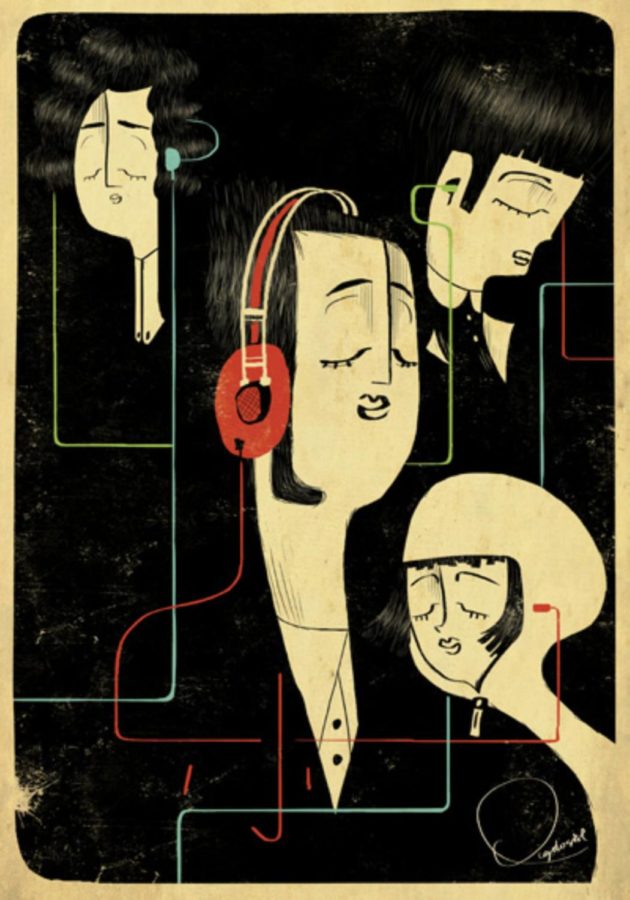Music: The Ultimate Instrument of Unification
December 18, 2017
“Music is the universal language of mankind.” – Henry Wadsworth Longfellow, 19th Century
Since the commencement of human interaction, music has prevailed as the perpetual source of human emotion, connection, and feeling. All factions of humanity have experienced this auditory art form and have been predominantly impacted by its profundity; hence, this immense and common connection through music has bonded the material world emotionally. Despite the drastic cultural, social, racial, and religious disparities of mankind, music’s deep intensity has become the universal language and bond of all living beings.
Therefore, a sense of warmth and human integration manifests during the holiday season with the implementation of music; not only does this phenomenon occur in the present era, but it has existed in all known regions of time.
At Marymount, I conversed with several students of different cultural and religious backgrounds about their most treasured holiday song and the reasons as to why. Not surprisingly, all noted that their love for the music stems from the emotional and touching memory that accompanies it; most often, this memory unifies their family. Behind the chosen music, I discovered cultural histories and unique religious traditions that further prove music’s role in unifying society.
“Music has charms to soothe the savage breast / to soften rocks, or bend a knotted oak” – William Congreve, 1697
Global Christianity: White Christmas – Bing Crosby
https://www.youtube.com/watch?v=w9QLn7gM-hY
“White Christmas,” written by Irving Berlin in the year of 1940 and subsequently performed by Bing Crosby in 1941, has accrued substantial popularity throughout the ages because of its emotional and unifying influence on society. The tune received acclaim in the year of its original release date, 1941, but by October of 1942, the song became the world’s best-selling single. Studies show that during this age, World War II haunted all families globally and generated a common atmosphere of lamentation; hence, the morose aspect of the song, (specifically through the lyrics: “just like the ones I used to know,”) deeply resonated with families impacted by the war. Additionally, the song radiated warmth and security, while creating the glamorized Christmas cultural environment: the song illustrates a desire for a cozy and jubilant celebration. Listeners were enthralled by the song’s impact, which bonded all families with its relatability. Bing Crosby’s “White Christmas” is continually classified as the most prevalent Christmas song, not only consolidating Christian families in the current Marymount community, but families of all backgrounds in numerous parts of the world over the course of several generations.
Global Judaism: Hava Nagila
https://www.youtube.com/watch?v=vHSNZK4Je-Y
“Hava Nagila,” the most popularized and commonly known song of Jewish tradition, is an Israeli-folk song written in the early 20th century. The vivacious tune translates to mean “let us rejoice!” and is utilized in every Jewish celebration, such as bar/bat mitzvahs, Hanukkah celebrations, and weddings. Although the original author is still undetermined, the early 20th century saw a remastering of the original piece, turning the slow chant into an exciting rhythmic tune. Immediately after the song was broadcast amongst Jewish communities in the Middle East, unity formed amid the Jewish race. In the midst of World War I, the Jewish community received a promising homeland in the region of newly liberated Turkey. When British troops, who were allied with the Jewish, took victory in Palestine, the Jewish community sought refuge in this renowned song. Today, Jewish societies all over the world continue to utilize this song to rejoice and seek happiness.
Global Islam: Quran Musical Recitations
https://www.youtube.com/watch?v=OQHp_o2TepY
Because of the sundry branches and distinct cultural facets of the Muslim faith, its music varies from region to region. According to many sources, Islamic communities recite chapters of the Quran, the Islamic holy book, in song during prevalent holidays and celebrations. Islamic musical styles can be traced back to prehistoric dates. In the Middle East, Islam has had an influential impact on music ever since the 7th century and has evidently been a unifying force. Islamic music permeates throughout all of Africa and African culture, ranging from instrumental to non-instrumental forms. Also, Islamic-inspired music is evident in several parts of Asia, and has evolved over the course of many generations. In conclusion, present-day, Islamic musical recitations stem from the Quran; hence, Islamic communities all over the world are unified through these commonly understood psalms. Islam has also inspired and molded music throughout the ages, assisting in the development of many genres of music commonly sung today.
Music, from the beginning of time, has acted as a unifying force in all facets of life, such as culture and religion. Societies all around the world have been shaped by the beauty and creativity of music and will continue to be impacted for years to come. During celebrations and special occasions, music is most habitually used to facilitate acceptance and unification.
“Next to the Word of God, the noble art of music is the greatest treasure in the world.” – Martin Luther
Music is, in fact, both the Word of God and the uniting tradition of mankind. And yes, it is the greatest treasure and instrument for unification.
Works Cited
https://www.npr.org/2000/12/25/1116021/white-christmas
https://en.wikipedia.org/wiki/Hava_Nagila
https://en.wikipedia.org/wiki/Islamic_music




Debra Miller • Dec 28, 2017 at 11:44 am
Important and lovely pieces of writing.